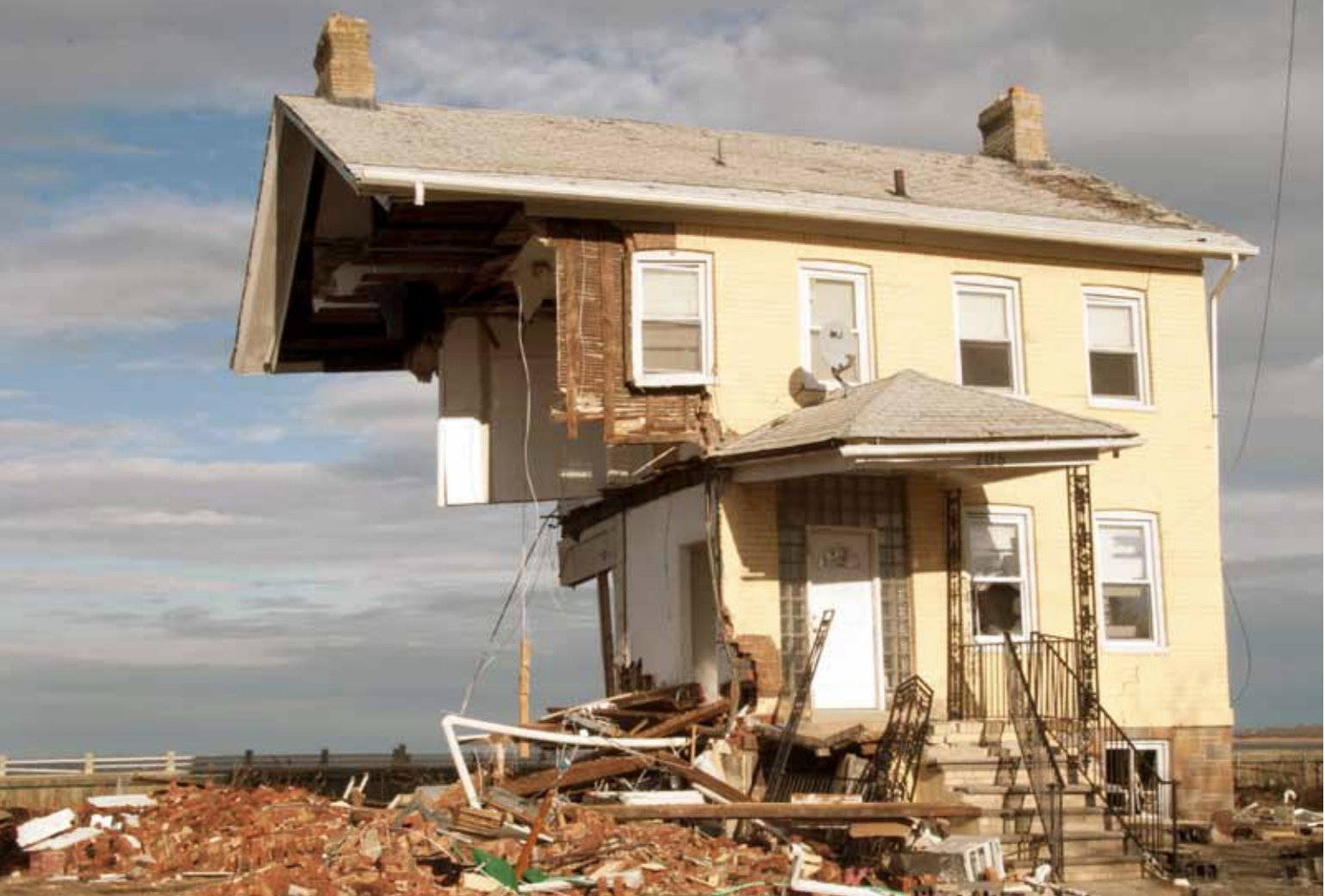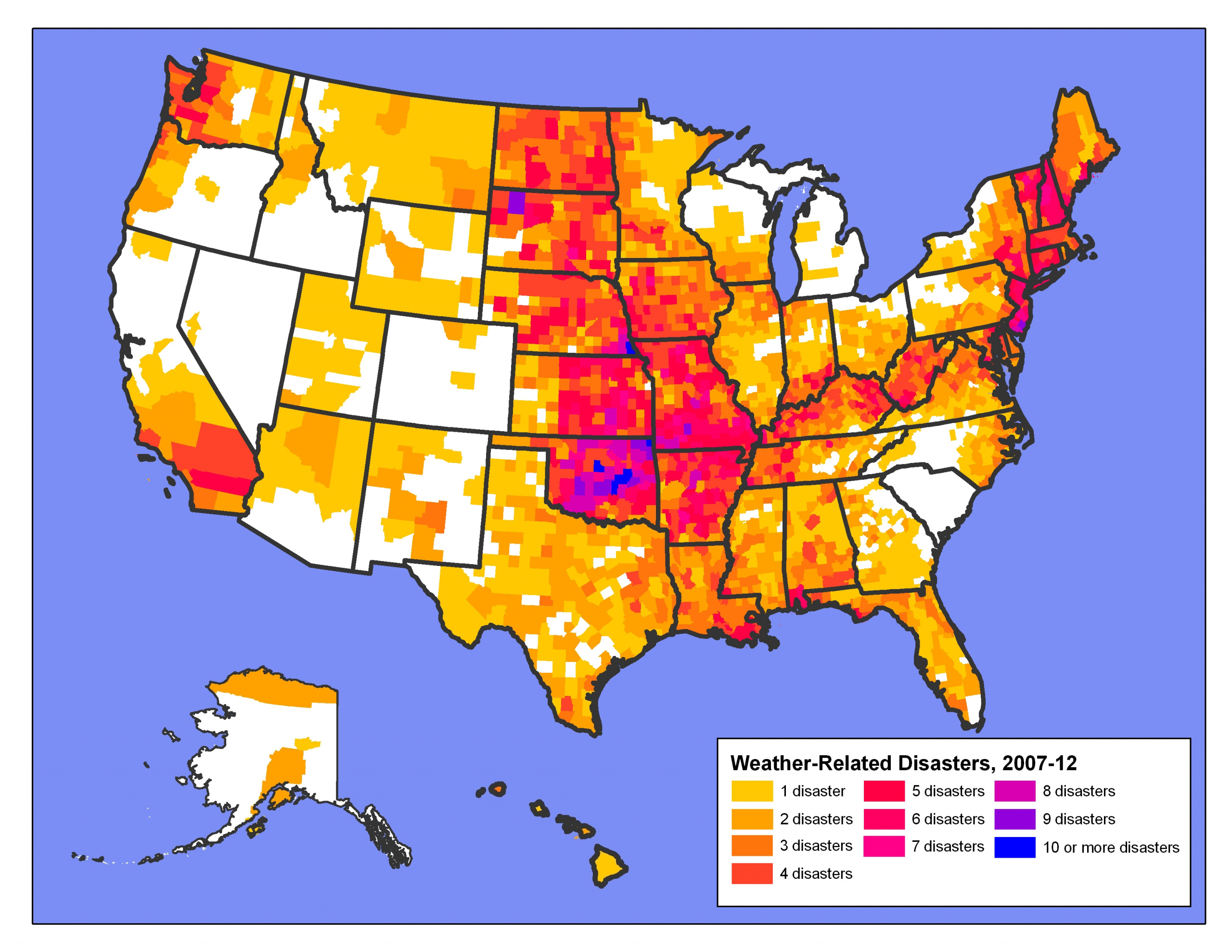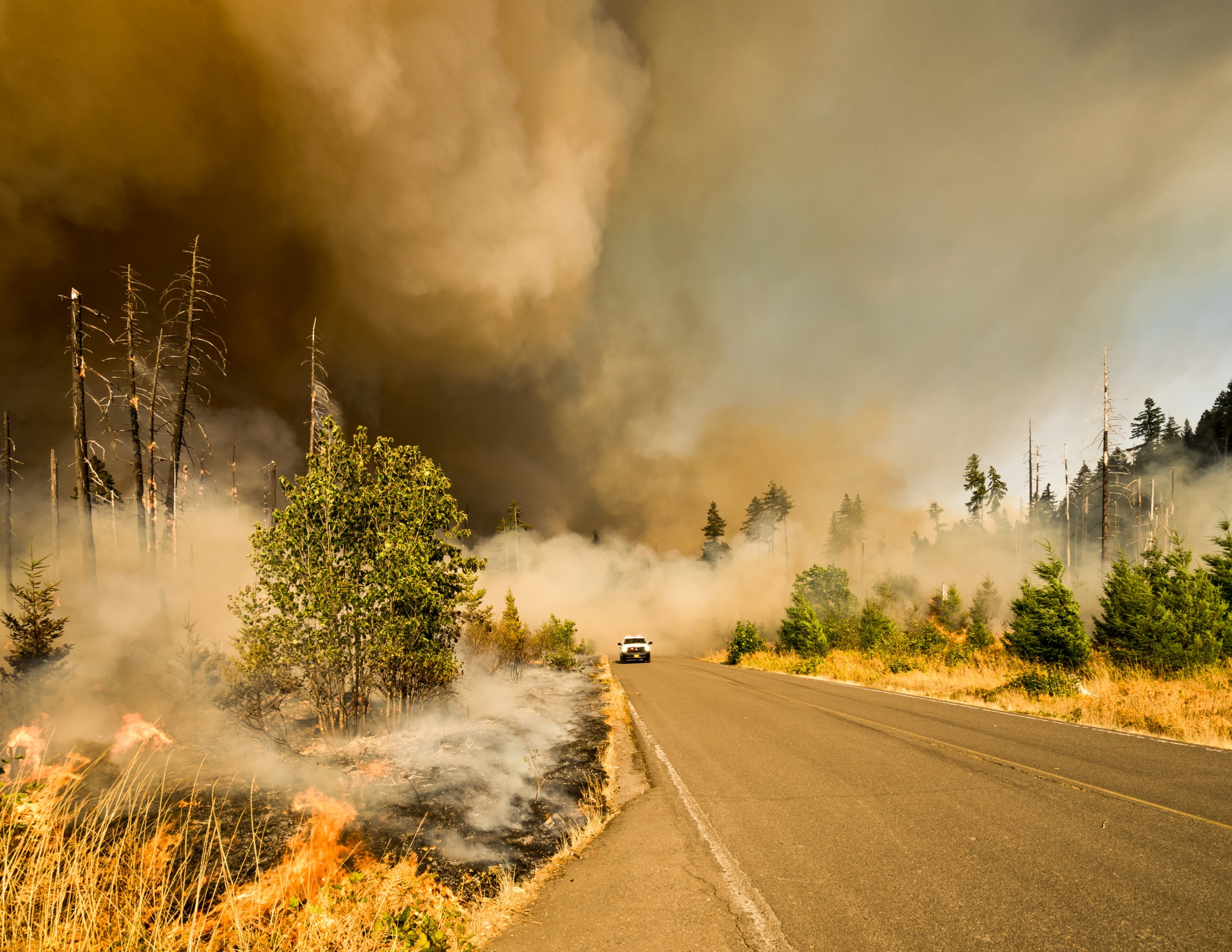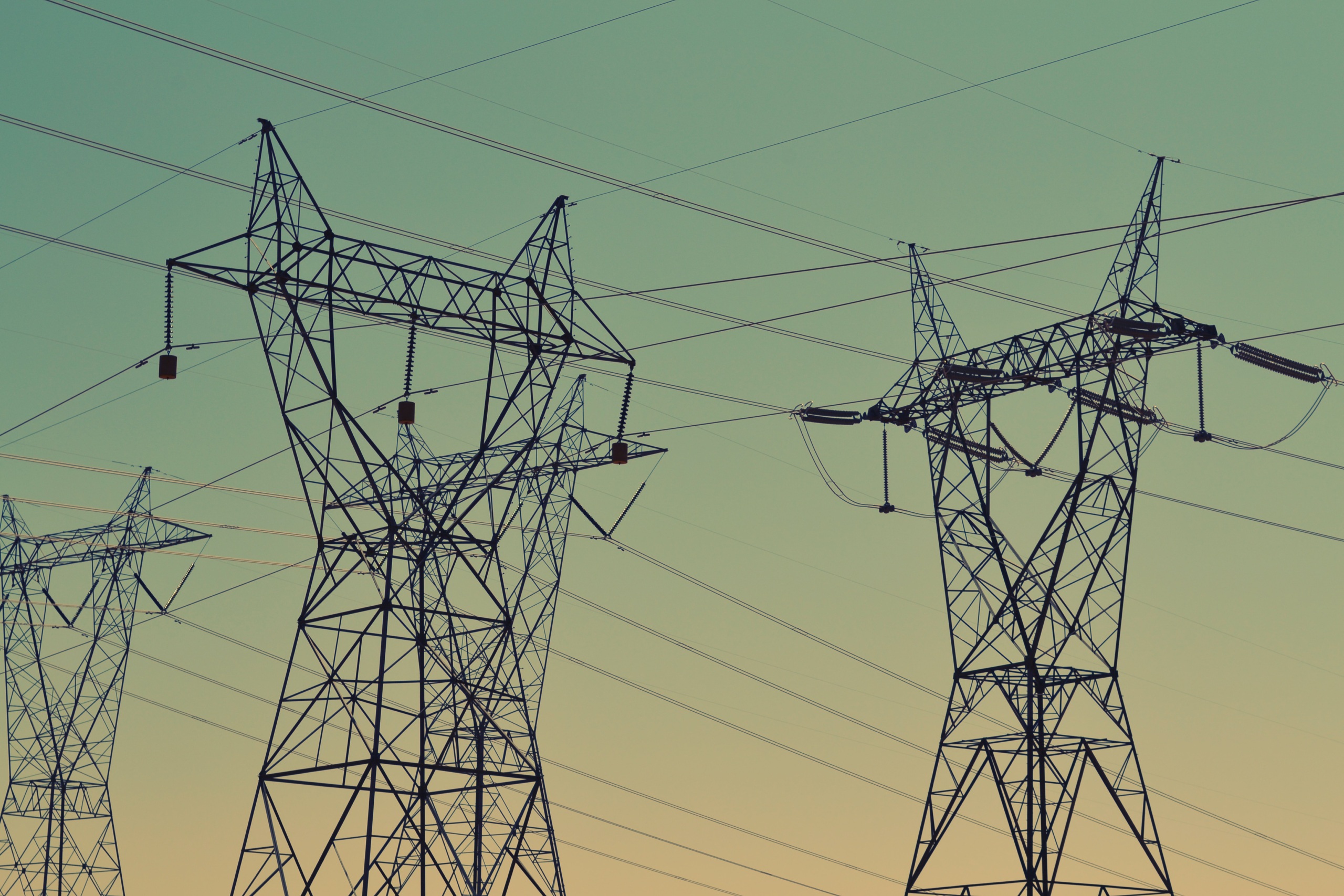
In the Path of the Storm
Global Warming, Extreme Weather and the Impacts of Weather-Related Disasters in the United States from 2007 to 2012
Weather-related disasters kill or injure hundreds of Americans each year and cause billions of dollars in damage. Climate science tells us that global warming will lead to increases in the frequency or severity of some types of extreme weather events that often cause disaster in the United States, while also causing changes - such as sea level rise - that will make even routine weather events more destructive. In the Path of the Storm reviews recent weather-related disasters in the United States and explores the latest science on the links between global warming and extreme weather.

Downloads
Weather disasters kill or injure hundreds of Americans each year and cause billions of dollars in damage. The risks posed by some types of weather-related disasters will likely increase in a warming world. Scientists have already detected increases in extreme precipitation events and heat waves in the United States, and climate science tells us that global warming will likely lead to further changes in weather extremes.
Since 2007[i], federally declared weather-related disasters in the United States have affected counties housing 243 million people – or nearly four out of five Americans. The breadth and severity of weather-related disasters in the United States – coupled with the emerging science on the potential for global warming to exacerbate some types of extreme weather – suggest that the United States should take urgent action to reduce emissions of global warming pollution, while taking steps to prepare for the dangers posed by climate change.
Weather-related disasters are common in the United States, affecting people in every part of the country.
- Since 2007, weather-related disasters have been declared in every U.S. state other than South Carolina. During this period, weather-related disasters affected every county in 18 states and the District of Columbia. (Alabama, Arkansas, Connecticut, Delaware, Hawaii, Iowa, Louisiana, Massachusetts, Maryland, Maine, Missouri, North Dakota, New Hampshire, New Jersey, Oklahoma, Rhode Island, Vermont and West Virginia.) (See Figure ES-1.)
- More than 19 million Americans live in counties that have averaged one or more weather-related disasters per year since the beginning of 2007.
- Eight U.S. counties – five in Oklahoma, two in Nebraska and one South Dakota – have each experienced 10 or more declared weather-related disasters since the beginning of 2007.
Figure ES-1. Number of Declared Weather-Related Disasters since 2007 by County

- More than 76 million Americans live in counties affected by weather-related disasters in 2012. There were at least 11 disasters in 2012 that each inflicted more than $1 billion in damage, including Hurricane Sandy, which inflicted estimated damages of at least $50 billion, making it the costliest weather disaster since Hurricane Katrina in 2005, and the costliest hurricane to ever hit the East Coast.
- As of February 2013, 705 counties housing more than 63.5 million people had been designated primary natural disaster areas as a result of drought by the U.S. Department of Agriculture.
Several extreme events in 2012 broke previous weather records.
- The contiguous United States experienced its hottest month and hottest year in recorded history in 2012. The United States smashed the previous record for warmest year – exceeding the previous record year (1998) by 1° F. The United States experienced its warmest spring, second-warmest summer and fourth-warmest winter in 2012. The nation also posted its warmest single month on record in July 2012.
- Nebraska and Wyoming experienced their driest years on record, while other Plains and Midwestern states experienced drier than normal conditions.
- The U.S. experienced its most widespread drought in more than a half century, as a result of record heat and low rainfall. In July 2012, 64 percent of the nation experienced moderate to exceptional drought, according to the National Climatic Data Center, making it the most widespread drought since at least 1956.
- Hurricane Sandy broke or challenged multiple records. It was the largest tropical cyclone in terms of area since modern record-keeping began in 1988, was responsible for the lowest barometric pressure ever recorded along the Northeast U.S. coast, and produced record storm tides in the New York City area.
Some types of extreme weather events have become more common or intense in recent years and may continue to become more frequent or severe in a warming world.
- Extreme downpours. The United States has experienced an increase in heavy precipitation events, with the rainiest 1 percent of all storms delivering 20 percent more rain on average at the end of the 20th century than at the beginning. The trend toward extreme precipitation is projected to continue, even though higher temperatures and drier summers will likely also increase the risk of drought in certain parts of the country.
- Heat waves. The United States has experienced an increase in the number of heat waves over the last half century. Scientists project that heat waves and unusually hot seasons will likely become more common in a warming world.
- Hurricane intensity and rainfall. Hurricanes may become more intense and bring greater amounts of rainfall in a warming world, even though the number of hurricanes may remain the same or decrease.
- Global warming may also make weather events more dangerous. Rising sea level, ecosystem changes, and changes in the form of precipitation could reduce the ability of natural and man-made systems to withstand even “normal” weather events.
- There is much that remains to be understood about the ways in which some forms of extreme weather – such as tornadoes, severe thunderstorms and extratropical storms – will change as a result of global warming.
The United States should reduce global warming pollution now, and plan for a future in which some types of extreme weather events are more severe and occur more frequently.
- Federal and state governments should adopt and implement caps on global warming pollution capable of reducing emissions by at least 35 percent below 2005 levels by 2020 and by at least 85 percent by 2050, and implement the clean energy solutions needed to make these reductions a reality. These emission reductions are broadly consistent with what science tells us is necessary to lessen the most costly and devastating consequences of global warming, including those resulting from changes in extreme weather.
- Short of economy-wide caps on global warming pollution, local, state and federal governments should focus on capping and reducing pollution from the largest sources – most notably power plants and the transportation sector. Regional programs such as the Northeast’s Regional Greenhouse Gas Initiative can help to achieve this goal. At the federal level, the Environmental Protection Agency should use its authority under the Clean Air Act to set strong federal limits on carbon pollution from new and existing power plants.
- Decision-makers should avoid making the problem worse by rejecting new carbon-rich fuels such as tar sands, as well as infrastructure projects such as the proposed Keystone XL tar sands pipeline that facilitate the development of these carbon-rich fuels.
- The United States – including federal, state and local governments – should adopt clean energy solutions that reduce our dependence on fossil fuels and reduce global warming pollution. Among the most important steps are:
- Adopting enforceable targets, financial incentives, regulatory changes and investment strategies that increase the use of renewable energy sources such as wind and solar power.
- Implementing appliance standards, building codes, enforceable efficiency targets for utilities, fuel-efficiency standards for vehicles and other steps to promote energy efficiency.
- Continuing to develop and implement the fuels and technologies of the future – from electric vehicles to energy storage devices to “smart grid” technologies and new renewable sources of energy – through government support of research, development and deployment of those technologies and the adoption of technology-forcing standards where appropriate.
- Federal, state and local officials should take steps to prepare for a future of more frequent and severe extreme weather and to reduce the impact of those events. Government agencies should assess the risks posed by global warming-fueled extreme weather, develop plans to protect lives and property during extreme weather events, direct public resources toward investments in infrastructure and ecological restoration that improve our resiliency in the face of extreme weather, revise policies that encourage construction in areas likely to be at risk of flooding in a warming climate, and support continued research on the implications of global warming.
[i] Includes disasters related to events that began between January 1, 2007, and December 31, 2012, and for which a presidential major disaster declaration was issued prior to March 5, 2013.
Topics
Authors
Tony Dutzik
Associate Director and Senior Policy Analyst, Frontier Group
Tony Dutzik is associate director and senior policy analyst with Frontier Group. His research and ideas on climate, energy and transportation policy have helped shape public policy debates across the U.S., and have earned coverage in media outlets from the New York Times to National Public Radio. A former journalist, Tony lives and works in Boston.
Elizabeth Ridlington
Associate Director and Senior Policy Analyst, Frontier Group
Elizabeth Ridlington is associate director and senior policy analyst with Frontier Group. She focuses primarily on global warming, toxics, health care and clean vehicles, and has written dozens of reports on these and other subjects. Elizabeth graduated with honors from Harvard with a degree in government. She joined Frontier Group in 2002. She lives in Northern California with her son.
Tom Van Heeke
Policy Analyst
Find Out More

Five key takeaways from the 5th National Climate Assessment

Carbon dioxide removal: The right thing at the wrong time?

Fact file: Computing is using more energy than ever.


